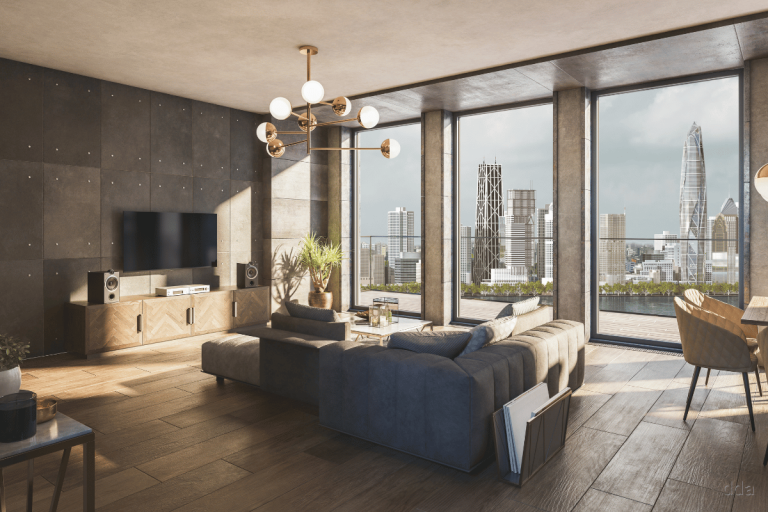In Singapore, where space is a premium asset, interior design is no longer just about aesthetics—it’s a strategic tool that transforms small areas into efficient, comfortable, and visually appealing homes. With urban living demanding smart solutions, interior design enables homeowners to balance functionality with style, ensuring every corner is purposeful without sacrificing luxury or personality. Thoughtful interior design in Singapore allows residents to enjoy the full potential of their homes, even within limited square footage.
Smart Space Planning: Maximising Every Square Metre
Effective interior design starts with intelligent space planning. In Singapore, where every square metre counts, designers carefully analyse traffic flow, usage patterns, and lifestyle needs to optimise layouts. Open-concept designs, strategically placed partitions, and multi-zone living areas create the illusion of spaciousness while maintaining practicality.
Interior design also integrates visual cues like mirrors, sliding doors, and low-profile furniture to enhance spatial perception. By anticipating daily routines and usage, designers ensure that every corner serves a purpose, whether it’s storage, leisure, or work. This level of intentional planning transforms compact homes into efficient, luxurious living environments.
Smart space planning doesn’t just increase functionality—it also elevates comfort. By prioritising accessibility, storage solutions, and adaptable layouts, interior design in Singapore enables families and individuals to live effortlessly while maintaining an uncluttered, sophisticated home.
Multi-Functional Furniture and Built-In Storage
Interior design in Singapore increasingly incorporates multi-functional furniture, hidden doors, and built-in cabinetry. These solutions maximize utility without crowding spaces, making small apartments feel more open and organised. For instance, a bed with integrated drawers, a dining table that doubles as a workspace, or wall panels that conceal storage can completely transform how a home functions.
Built-in storage is particularly critical in high-rise living. Interior design ensures that cupboards, shelves, and concealed compartments are seamlessly integrated into walls and layouts. This approach preserves visual flow while providing ample storage, demonstrating that efficiency and elegance can coexist in a compact home.
Moreover, multi-functional furniture allows interiors to adapt over time. With careful interior design, spaces can accommodate evolving family needs, social gatherings, or home offices, ensuring long-term practicality without compromising on style.
Minimalist Aesthetics: Clean, Calm, and Cohesive
Singaporean interior design is heavily influenced by Scandinavian and Japanese minimalism, favouring clean lines, neutral palettes, and uncluttered spaces. Minimalist interior design enhances perceived space by eliminating visual noise and creating cohesive, serene environments.
This approach also complements small-footprint living by highlighting essential elements and prioritising quality over quantity. Thoughtful interior design ensures that every piece of furniture, décor, and fixture contributes to both function and style, avoiding overcrowding while maintaining a luxurious feel.
Minimalist design also enables flexibility, allowing homeowners to personalise their homes with art, textiles, and lighting without disrupting spatial harmony. In Singapore, where apartment sizes are compact, this careful balance between simplicity and sophistication is a hallmark of effective interior design.
Lighting Strategies That Expand Spaces
Lighting is one of the most powerful tools in interior design for compact Singapore homes. Well-planned lighting schemes can visually expand spaces, highlight architectural features, and create atmosphere. Designers use a combination of natural light maximisation, layered artificial lighting, and reflective surfaces to make homes feel brighter and more open.
Interior design integrates task, ambient, and accent lighting to define zones within open-plan layouts. For example, under-cabinet LED strips, recessed ceiling lights, or wall-mounted sconces can delineate areas while keeping the home uncluttered. Mirrors and glossy surfaces further amplify light, creating a sense of depth that belies limited floor space.
Effective lighting in interior design goes beyond visibility—it impacts mood, comfort, and the perception of space. In Singapore’s compact homes, it is a critical element for achieving both practicality and luxury, making interiors feel inviting, expansive, and well-considered.
Interior design is the key to making Singapore homes both beautiful and practical, especially when every inch matters. From smart space planning and multi-functional furniture to minimalist aesthetics and strategic lighting, thoughtful interior design transforms compact spaces into efficient, stylish, and comfortable living environments.
Partnering with experienced interior design professionals ensures that even the smallest apartments can feel expansive, cohesive, and luxurious.
✨ Discover how DDA can help you optimise your Singapore home with interior design solutions that blend style, function, and sophistication.
Visit dda.com.sg or connect with us today.



